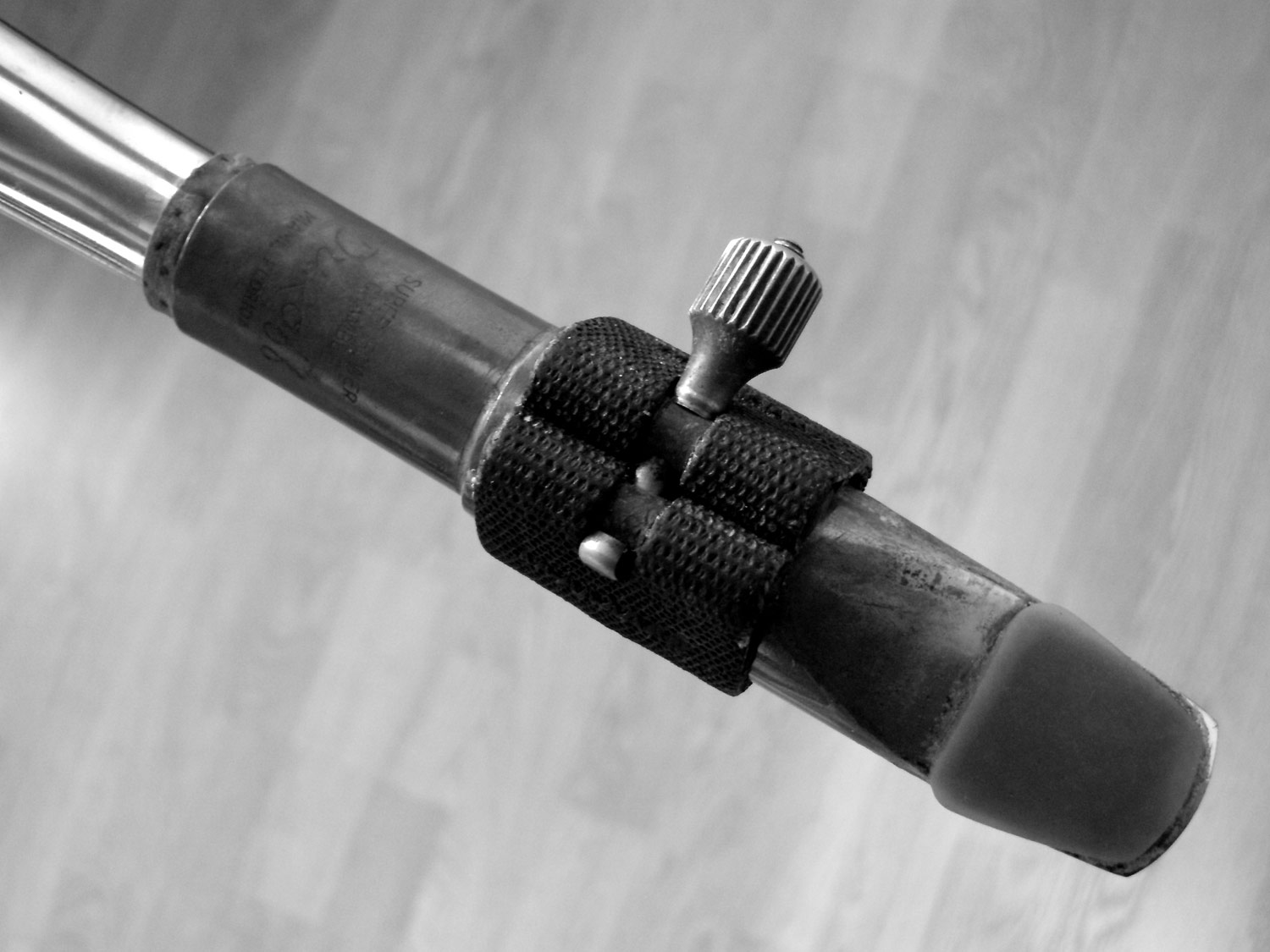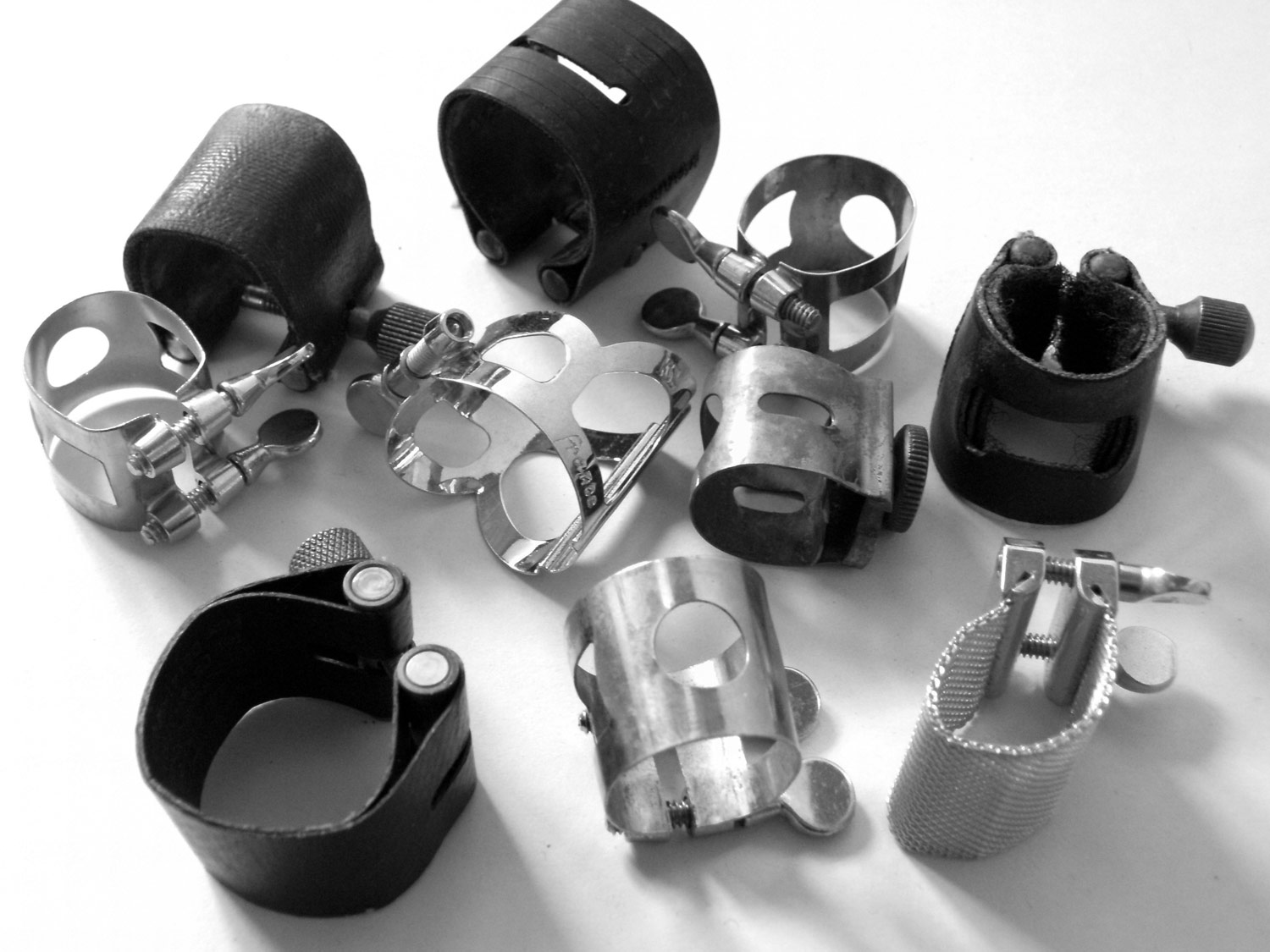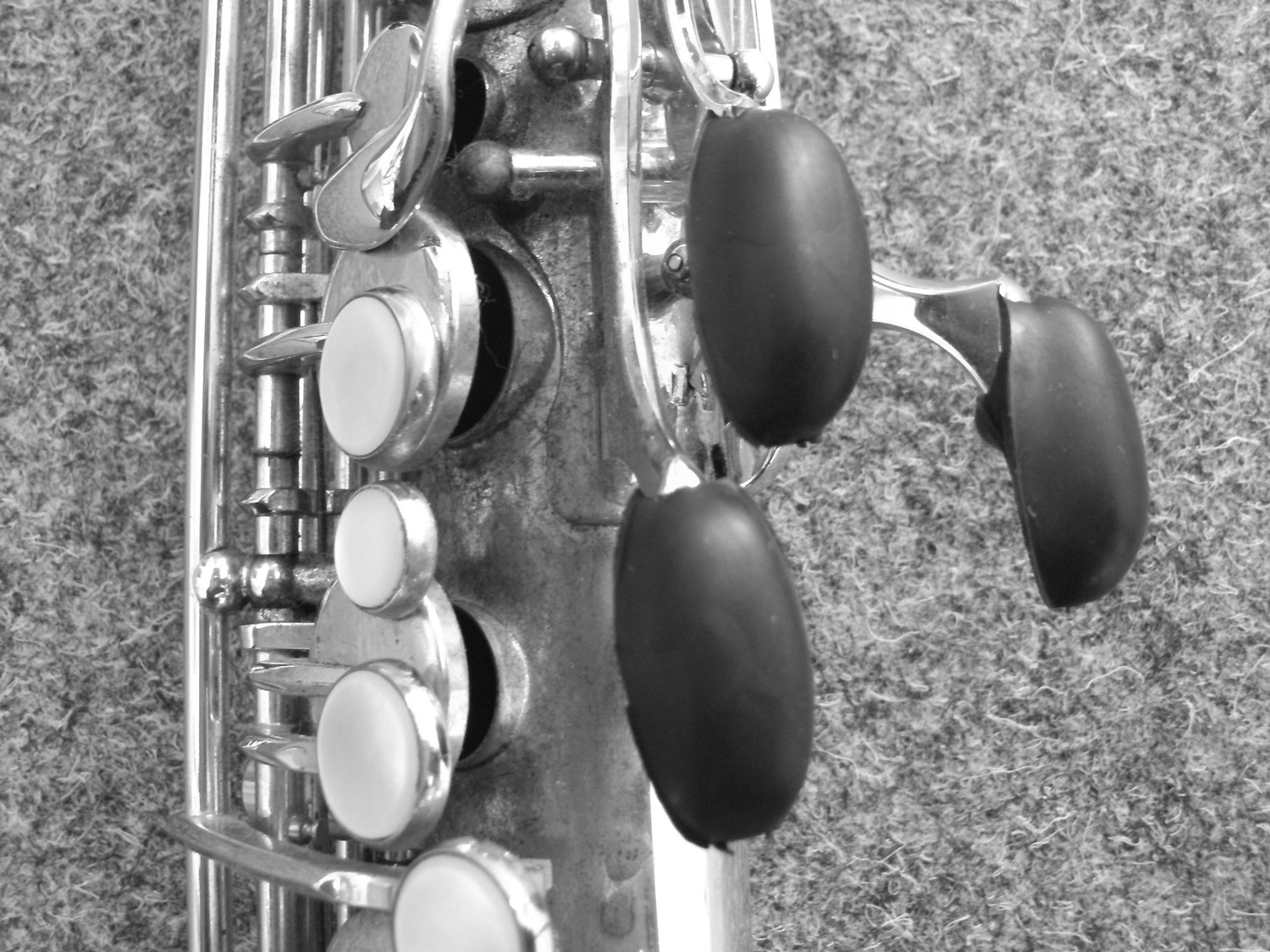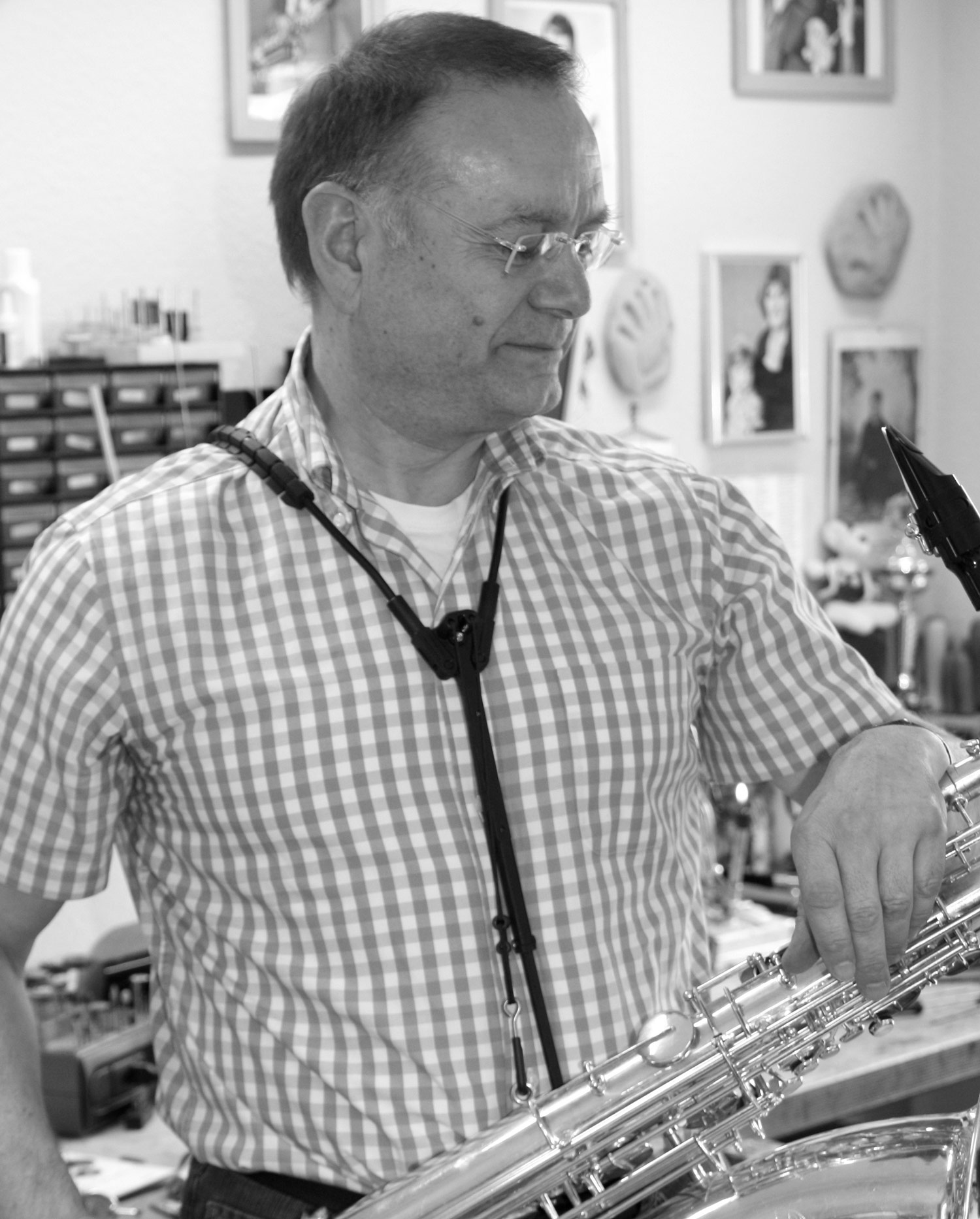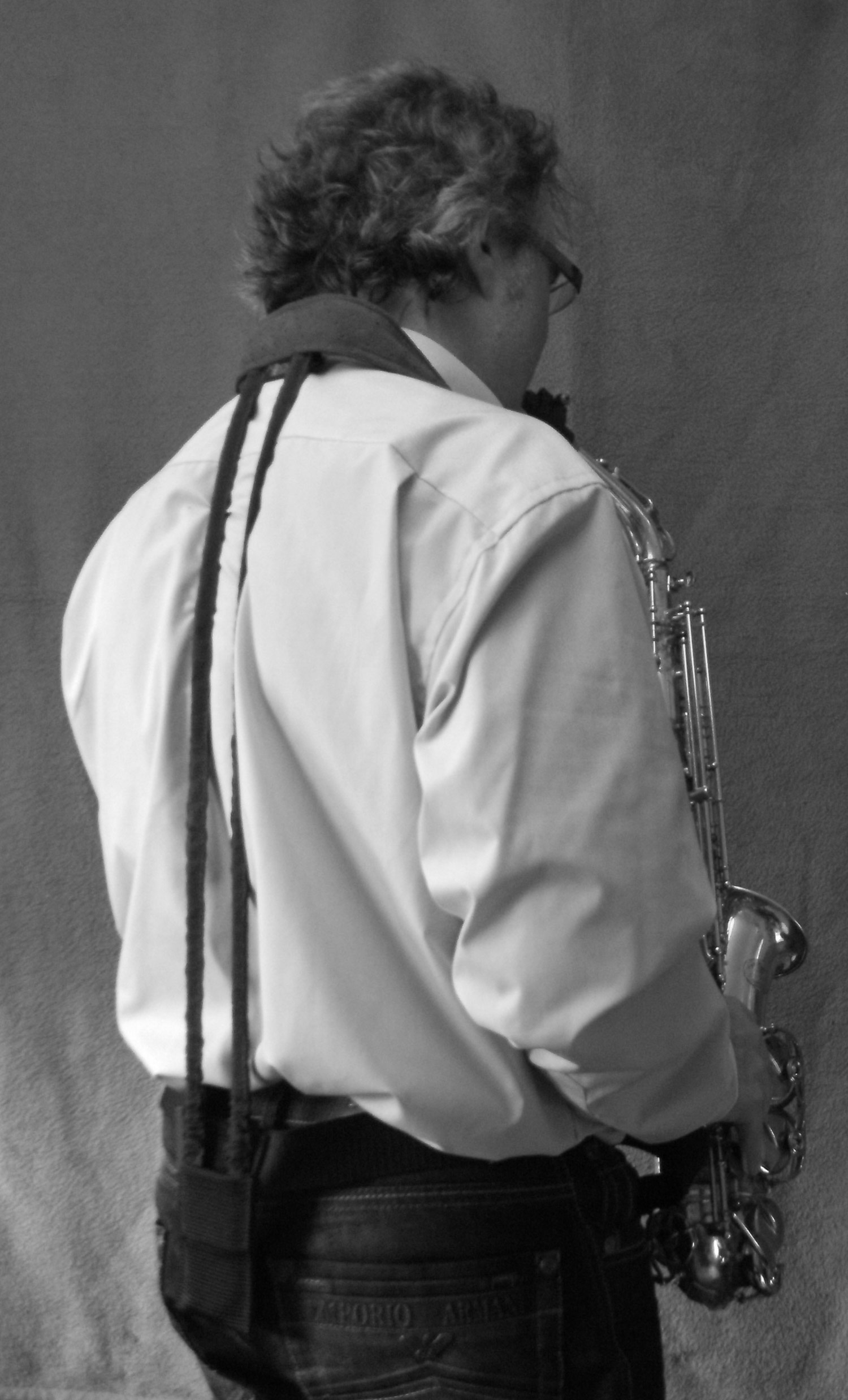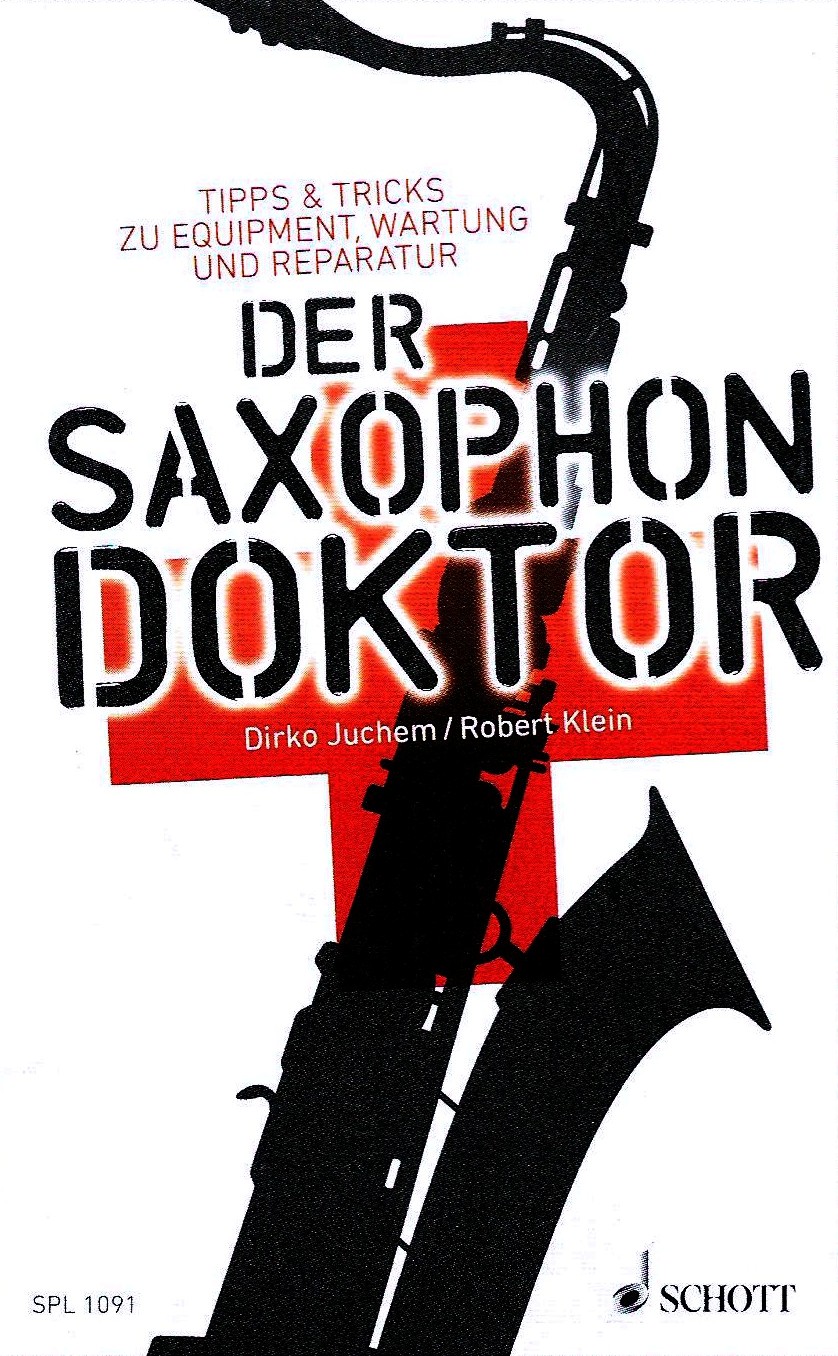Introduction
So far, our workshops have centered on playing techniques and exercises to improve our sound, dynamics, intonation and fingering. This time, I want to show you how relatively easy tricks regarding the equipment can produce impressive results for saxophone players.
When I look at my own equipment, I must say that my JUPITER 1100, my carefully selected mouthpiece and the matching reeds already constitute a solid foundation. Yet, small and usually highly affordable items, like ligatures, bite plates, palm key risers, or simply a more comfortable strap often make playing the saxophone more pleasant and contribute to a better sound. But let’s get started:
Bite Plates
For as little as €3, these can be a real game changer no saxophone player can afford to ignore. Especially with metal mouthpieces, and to a lesser extent plastic and rubber models, it can be a blessing to have the upper teeth rest directly on the mouthpiece. This causes pleasant vibrations in the teeth. You will no longer slide off the mouthpiece or end up damaging it by biting too forcefully.
Bite plates are available in every music store and in a variety of strengths. Try out various models until find the bite plate that meets your specific requirements. After purchasing it, you need to glue it to the mouthpiece. Depending on the quality (and firmness of your embouchure), this item should last several weeks—perhaps even months—before it needs to be replaced.
Ligatures
Even though a good ligature costs more than a bite plate, it is still a wise investment. There used to be a time when the reed (especially on a clarinet) was secured to the mouthpiece by winding a cord around it. The brackets that come with most present-day saxophones are a much easier solution: install the reed, tighten the screws, and start playing.
It took a while for players to discover that those brackets are not the perfect solution, because the reed cannot vibrate as freely as one would like. This, in turn, affects the sound and the embouchure. This discovery caused several manufacturers to experiment with new ligature types. They tried simple leather or textile straps with tiny metal inlays and braided metal bands that look like a jewelry chain.
Here is what I think: Pay your favorite music store a visit and try out different ligatures. It would be a good idea to use your own saxophone and one of your broken-in reeds. If you fail to notice a difference, you can rest assured that your current ligature is perfect for your needs. I myself have noticed that a saxophone reed tends to vibrate much better with a perfectly matched ligature, which leads to a smoother response (especially in the low register) and to a fuller tone.
Palm Key Riser
Here is another affordable item likely to make a significant difference for players with large hands. “Palm keys” is the international term for the lateral keys you to press with your left index to access the third octave (top D, D# and F). Saxophone players with large hands may have problems pressing them, because they are too low with respect to their hand. Just slide these rubber pads over the palm keys to raise them, as it were. My advice: give it a try and see if it works for you.
An alto saxophone weighs about 2.5kg, a tenor sax roughly 3.5kg. During long rehearsals and shows, this weight may easily turn into a burden. I would like to suggest to try out alternatives to conventional saxophone straps. There are shoulder straps that distribute the weight over the shoulders (rather than your neck) and saxophone holders (left picture) whose two brackets rest on your shoulder. playability and at the same time relieves your back and spine.
Those who consider this still too much strain on their neck and shoulders should have a go with freeneck straps (pictured right). Here, the saxophone is attached to your belt using a metal bracket, thereby freeing both your neck and shoulders from the instrument’s weight. rest on your shoulder. playability and at the same time relieves your back and spine.
Additional tip for baritone players:
JUPITER is one of the few manufacturers to fit its baritone saxes with a floor peg. So if you usually play your rather heavy baritone in a sitting position (such as in a big band or music society), there is no need to carry the entire weight with the strap—the sax can be conveniently placed on the floor. Do not remove the strap, though: it will help you maintain the baritone in position.
Further equipment
By way of conclusion, I would like to briefly mention a few other handy accessories:
Saxophone stand:
Every player should have one. Placing a saxophone on a table or chair is far too dangerous, because it can easily fall off and get damaged.
Case:
The cases supplied by the manufacturers are usually all you need. Some sax players prefer a “gigbag”, however, because it’s lighter and also looks cool. Be sure to purchase a high-quality bag with a rigid frame for maximum protection of your saxophone. Yet, even these bag flavors may not provide sufficient protection from accidental jostling and ensuing damage.
For any additional questions regarding your saxophone, accessories (mouthpiece, reeds) and equipment, feel free to write me an e-mail: info@remove-this.dirko-juchem.de
It will be my pleasure to answer quer questions.
I hope the above has already been helpful. Rock on with you sax!
Cheers,


